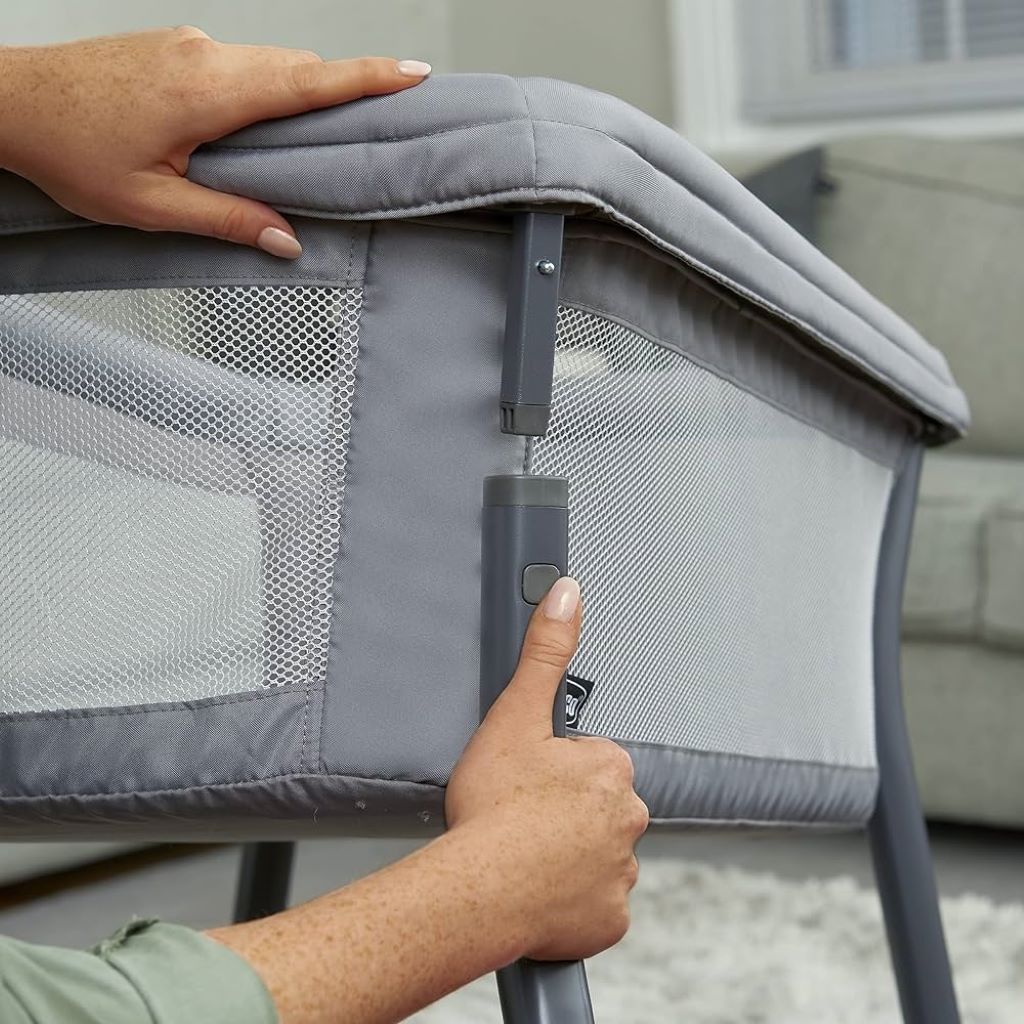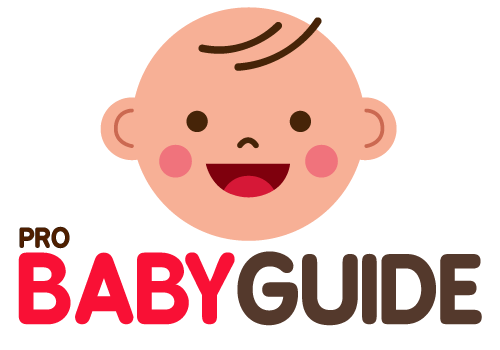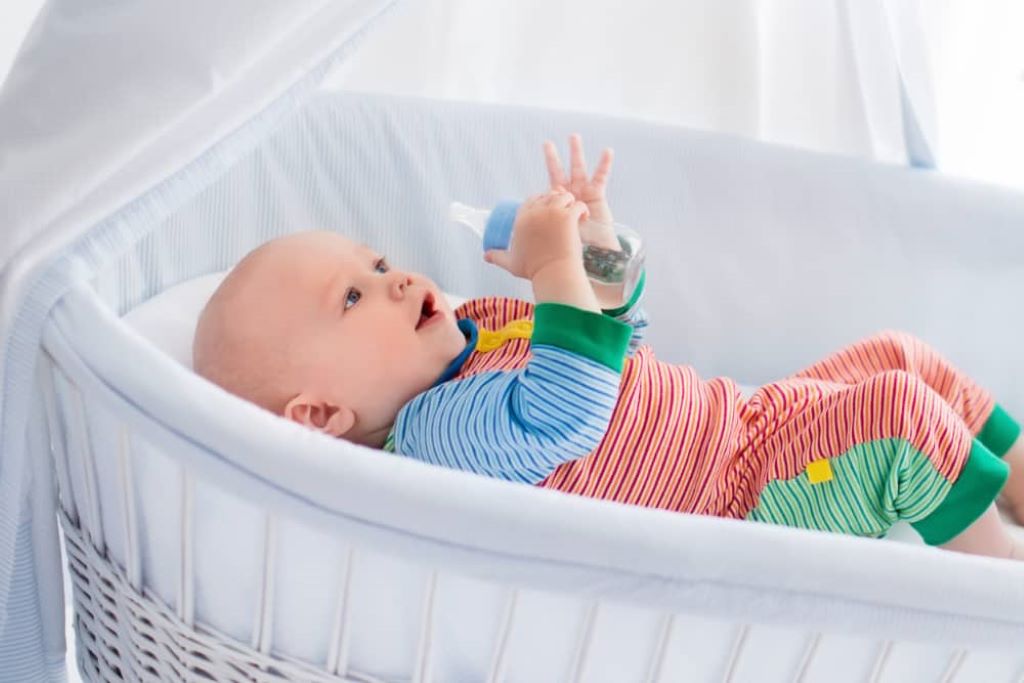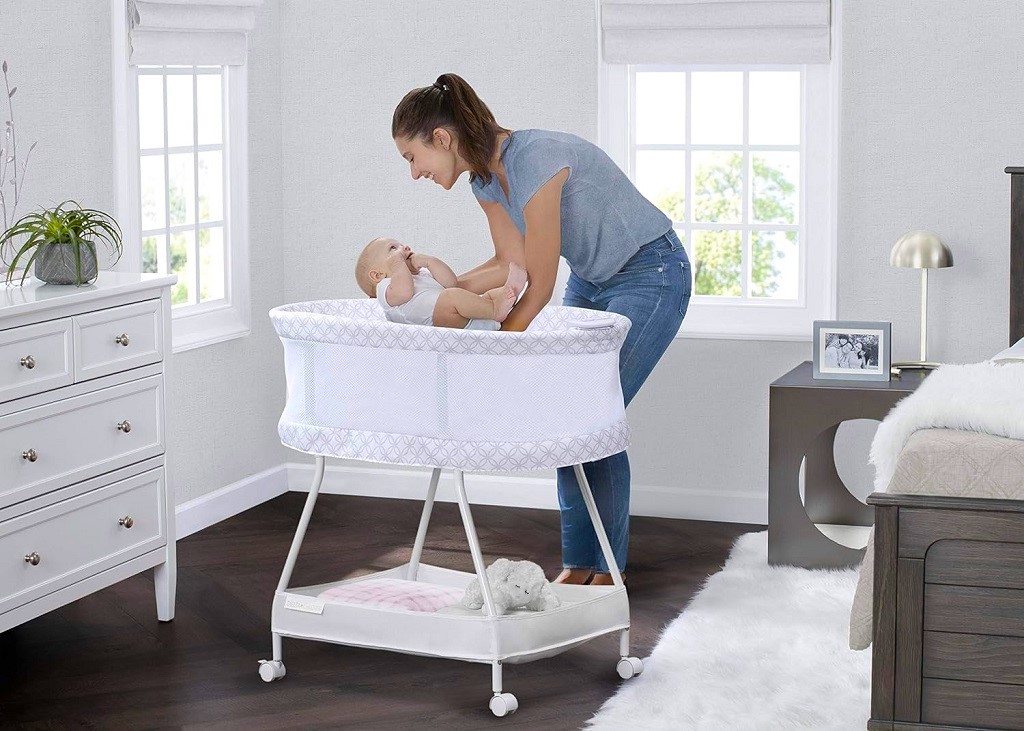A clean and well maintain bassinet is essential for your baby’s health and comfort. Regular cleaning helps prevent the buildup of dust, germs, and allergens, ensuring a safe and hygienic sleep space for your little one.
Why Regular Bassinet Cleaning Matters
- Hygiene: Babies have developing immune systems. A clean bassinet minimizes their exposure to potentially harmful bacteria and viruses.
- Allergen Reduction: Dust mites and other allergens can trigger or worsen allergies and respiratory issues in infants.
- Comfort: A fresh and clean bassinet promotes better sleep and overall well-being for your baby.
Cleaning Frequency
- Sheets and Linens: Wash these weekly, or more often if soiled or spit up on.
- Mattress Pad: Clean the mattress pad monthly, following the manufacturer’s instructions.
- Bassinet Frame: Wipe down the frame weekly with a damp cloth to remove dust and grime.
- Deep Clean: Perform a thorough cleaning of the entire bassinet every few months, or as needed.
Cleaning Supplies
- Mild Detergent: Use a fragrance-free, baby-safe detergent for washing fabrics.
- Disinfectant: Choose a non-toxic, baby-safe disinfectant for hard surfaces.
- Soft Cloths or Sponges: Avoid abrasive materials that could damage the bassinet’s fabric or finish.
- Vacuum Cleaner: Use a handheld vacuum with a soft brush attachment to remove dust and debris.
Step-by-Step Cleaning Guide

Remove Bedding: Strip the bassinet of all sheets, blankets, and mattress pads.
- Wash Fabrics: Launder all removable fabrics according to their care instructions. Use hot water for sheets and blankets to kill germs.
- Clean Mattress Pad: Follow the manufacturer’s cleaning guidelines. If unsure, spot clean with a damp cloth and mild detergent. Allow it to air dry completely before putting it back in the bassinet.
- Disinfect Frame: Wipe down the entire frame with a damp cloth and baby-safe disinfectant. Pay extra attention to areas where your baby’s hands or face might touch.
- Vacuum: Use a handheld vacuum with a soft brush attachment to remove dust and debris from crevices and hard-to-reach areas.
- Air Dry: Allow all parts of the bassinet to air dry completely before reassembling.
To Maintain Bassinet Tips
- Check for Wear and Tear: To maintain bassinet, Regularly inspect the bassinet for loose screws, damaged parts, or fabric tears. Repair or replace as needed.
- Rotate the Mattress: If your bassinet mattress is double-sided, flip it over every few months to promote even wear.
- Store Properly: When not in use, store the bassinet in a clean, dry place, away from dust and direct sunlight.
Related: Choosing the Best Safest Stationary Baby Bassinet: A Comprehensive Guide for New Parents
Additional Considerations
- Stains: Address stains promptly to prevent them from setting.
- Mold and Mildew: If you notice any signs of mold or mildew, clean the affected area thoroughly with vinegar and water solution.
- Secondhand Bassinets: If you’re using a pre-owned bassinet, be sure to disinfect it thoroughly before use.
- Safety: Always follow the manufacturer’s instructions to clean and maintain bassinet to ensure your baby’s safety.
Related: Cloud Baby Bassinet: The Must-Have Sleep Solution for Your Little One
Beyond Cleaning
In addition to regular cleaning, prioritize a healthy sleep environment by:
- Choosing Breathable Fabrics: Opt for natural fibers like cotton for sheets and blankets.
- Maintaining Optimal Room Temperature: Keep the nursery cool and comfortable.
- Minimizing Clutter: Avoid placing unnecessary items in or around the bassinet.
By following these cleaning and maintenance tips, you can create a safe, comfortable, and healthy sleep environment for your precious little one. Remember, a clean bassinet is an investment in your baby’s well-being.




